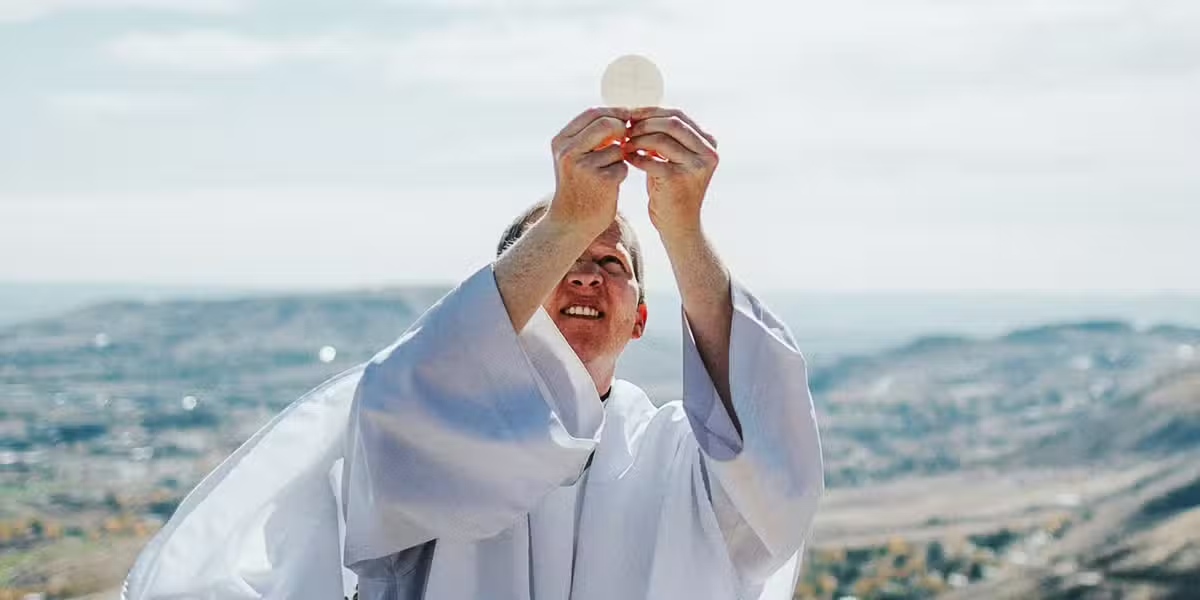There weren’t ecologists in the Middle Ages, at least by our modern understanding of environmentalism. But St. Francis changed all that with a new vision of creation as a reflection of God’s love and the Incarnation.
Francis of Assisi is an example of a religious person in the Christian tradition who stood rightly in creation. Francis was probably one of the first deep ecologists in the tradition without ever trying to be one. Deep ecology was a movement that arose in the 1970s in response to the environmental crisis. It highlighted the fact that we humans stand in the web of life and not above or beyond it.
The birth of Francis’ “ecological self” began in the beautiful province of Umbria, with its breathtaking panorama of valleys and mountains. He was born into a merchant class family and received a basic education in reading and writing in the local church school of Assisi. Since he had not been trained as an intellectual in his youth, he never absorbed the Christian Neoplatonic attitude toward creation that occupied the discussions of students at the University of Paris. Neoplatonism was a hierarchical way of viewing God and the world and passed into the Middle Ages through the writings of Augustine and Pseudo-Dionysius, among others. The Neoplatonic ladder of ascent presented a movement away from—and rising above—natural, sensible things as if they were inferior and, in some sense, not truly real.
Francis came from a base of popular and lay experience. His family was part of the rising merchant class in Assisi. His father was a cloth merchant and owned a shop in Assisi where Francis worked for some time. Francis was not only familiar with the daily business of buying and trading cloth, but he came into contact with many different types of people who worked with their hands and valued the material things of the earth. The idea of transcending this world to contemplate true reality, like the Neoplatonists, would have been foreign to Francis’ thinking. Rather, he regarded earthly life as possessing ideal, positive potential as God’s creation.
A Seismic Shift
Although some might see a dualism in St. Francis, who spoke of “hatred of the body,” such a view would be erroneous, for Francis saw material reality, including the body, as good. In his Fifth Admonition, for example, he said: “Consider, O human being, in what great excellence the Lord God has placed you, for he created and formed you to the image of his beloved Son according to the body and to his likeness according to the Spirit.” This is hardly the insight of one who thinks matter is evil. His disdain for the body focused on attitudes or behaviors that led to broken relationships and prevented the goodness of the body from shining out. We might assume, however, that his liberal youth influenced his view of the body as well.
His first biographer, Thomas of Celano, tells us that as a young man, Francis was a libertine, a spendthrift, and rather vain. He loved fine parties, foolish talk, and the esteem of others. The young Francis probably had little care or concern for the world of nature, as the center of his attention seemed to be himself. The direction of his life began to change, however, when Francis’ desire for the glory of knighthood was thwarted. He was wounded in battle, and, while convalescing in a soldiers hospital, he began to ponder the meaning of his life. This period marked the beginning of Francis’ conversion. Thomas of Celano writes that around this time, “The beauty of the fields, the delight of the vineyards, and whatever else was beautiful to see could offer him no delight at all.”
The search for meaning in his life led Francis to withdraw from his circle of friends and to search out abandoned places in order to pray. One day, he wandered into the dilapidated San Damiano Church on the outskirts of Assisi. Upon entering the church he saw a large Byzantine cross of the crucified and risen Christ. While praying before the cross, he heard the words, “Francis, go rebuild my house; as you see, it is all being destroyed.” “From that time on,” Thomas writes, “compassion for the crucified [Christ] was impressed into his holy soul.”
Where the Word Dwells Deepest
In this early stage of his conversion, we might say that Francis was “grasped” by the overwhelming love of God, a love that “seized” him in the core of his being. According to Bonaventure’s account, Francis’ “soul melted at the sight, and the memory of Christ’s passion was so impressed on the innermost recesses of his heart.” His experience of God’s love turned him in a new direction. The search for meaning, purpose, and openness to God—as the love of God penetrated his soul—changed Francis’ life forever and marked the beginning of his impact on history.
The life of Francis shows us that right relationship in creation is not easy. He heard the words spoken by the crucified Christ—“go rebuild my house”—and took them literally. He began to rebuild San Damiano stone by stone. But as he reflected on these words, he came to understand a deeper meaning of them in his life. His devotion to Mary, the mother of God, led him to realize that the “house of God” is, first, the human person. The Word dwells in human flesh, not in stone buildings.
As the Word dwells in the human person, so, too, the same Word dwells in creation. The word who is made flesh in the person of Jesus Christ is the same word through whom all things are made. The Incarnation of God opened up the eyes of Francis to the inner truth of creation as the very place where God is revealed—or concealed—when humans fail to see God humbly pres-ent in the magnificent diversity of creation.
Text by Keith Douglass Warner, OFM, Ilia Delio, OSF, and Pamela Wood








